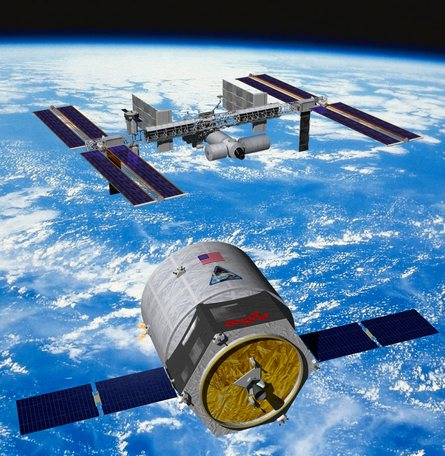A scale-model plasma rocket engine that is to be tested at the International Space Station could be delivered in 2012 by a NASA Commercial Orbital Transportation Services (COTS) programme launch system.
Houston, Texas-based AdAstraRocket's ISS Variable Specific Impulse Magnetoplasma Rocket (Vasimir) test article will be a scale-model engine similar to the VX-200 prototype being operated in the company's vacuum facility. The ISS test engine will be called Vasimir Flight (VF)200-1 (to denote 200kW and flight one).
AdAstraRocket chief executive Franklin Chang-Diaz met NASA on 21 August and was told about the capabilities of Space Exploration Technologies' (SpaceX) Falcon 9. SpaceX and Orbital Sciences are the two companies participating in COTS.
Falcon 9 is SpaceX's rocket that would launch its Dragon capsule, and Orbital's Taurus II booster would orbit its Cygnus spacecraft that could have a 2,300kg (5,000lb) cargo capacity for the ISS. None of these COTS vehicles have yet flown.
 |
|---|
"We have a number of options, everything is on the table," says Chang-Diaz. The options include a flight on the Japan Aerospace Exploration Agency's HII Transfer Vehicle.
AdAstraRocket was spun out of NASA three years ago and has since signed two agreements with the agency. The third concerns the integration of the VF200-1 test article on station and has been discussed since 2006. Those discussions have seen the scope of the on-station testing change.
The Vasimir works by injecting gas, such as hydrogen, into an engine that turns it into a plasma. That plasma is then energised further using radio signals as it flows through the engine, a process controlled by electromagnetic waves from superconducting magnets. Accelerated and heated through this process the plasma is focused and directed as exhaust by a magnetic nozzle. Vasimir is many times more efficient than conventional chemical rockets.
Source: Flight International



















